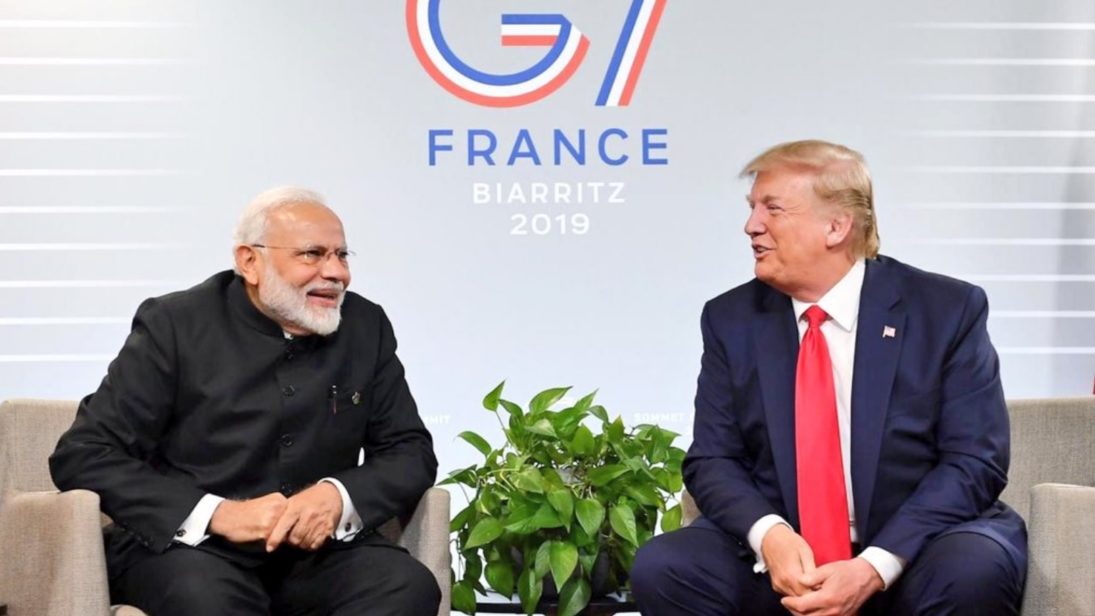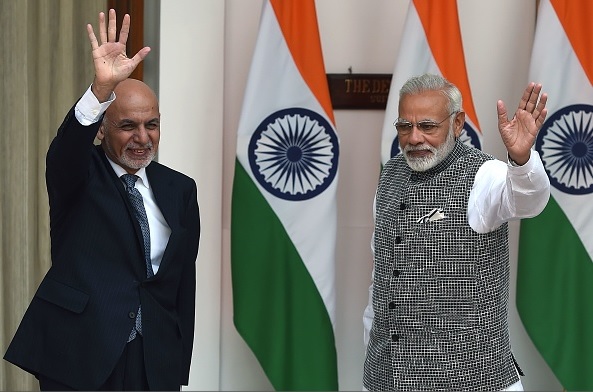
Prime Minister Narendra Modi’s week-long visit to the United States from September 21 to September 27 is a good opportunity for New Delhi to not only set the clock back on bilateral ties with Washington but establish firmer grounds of engagement for the future. Recent developments between the two countries, particularly on matters of trade, the Kashmir dispute, and differences on Iran and Russia have been irritants, directly or indirectly impinging on Indo-U.S. relations. Modi’s visit aims to address these issues and create a basis for deepening trust between the two nations.
Among the highlights of Modi’s visit are the 50,000-strong Indian-American community event “Howdy Modi” in Houston, Texas where he will be joined by President Trump, his meeting with the CEOs of American energy companies, and his address at the 74th UN General Assembly (UNGA) session in New York. In particular, Trump’s decision to join Modi in Houston is being seen as a shot in the arm of Indo-U.S. relations, reflecting the importance Washington attaches to New Delhi despite recent disagreements.
This visit is critical for Indo-U.S. relations for three reasons. First, with regards to the visit’s impact on the two countries’ trade dispute and the ability of both parties to move past it. Second, coming in the context of a return of U.S. dependence on Pakistan due to Islamabad’s leverage over the Taliban and a collapse of the U.S.-Taliban peace talks, there may need to be frank discussions about Indian concerns emerging from this. And third, it is an opportunity for both countries to discuss how each side’s relations with Iran and Russia figure in their bilateral ties.
Many worry that trade issues have the potential to become a major impediment in Indo-U.S. relations but early trends suggest that both countries may be able to resolve some of these issues during the trip.
Of these, trade issues are likely to be the biggest test for New Delhi and Washington. Some of the main U.S. concerns are centered on the trade deficit being in India’s favor and market access issues for U.S. companies in India such as with regard to agricultural and dairy products, price controls on medical equipment, and import duties and non-tariff barriers around mobile phones and motorbikes. India’s trade push with the United States will depend on the restoration of its status as a beneficiary of the Generalized System of Preferences (GSP) program, a scheme allowing duty-free entry for upto 2,000 export items, which was revoked by the Trump administration recently.
Many worry that trade issues have the potential to become a major impediment in Indo-U.S. relations but early trends suggest that both countries may be able to resolve some of these issues during the trip. The U.S. trade deficit with India that stood at USD $22.9 billion in 2017 has narrowed after India’s energy imports from the United States increased recently, potentially assuaging President Trump’s concerns. Commerce and Industry Minister Piyush Goyal has hinted that India and the United States may come up with a trade package during the meeting between President Trump and Prime Minister Modi that could address import duty and trade barrier issues, mutual withdrawal of their disputes at the World Trade Organization, and removal of higher tariffs on steel and aluminum by Washington that have hurt New Delhi. In what could alleviate American concerns further, India plans to further step up imports, including oil, from the United States, with USD 4 billion worth of imports already “in the pipeline.” Besides, there could also be a conditional restoration of the GSP with additional concessions from India, possibly with a reciprocal rollback of retaliatory tariffs that India imposed on 28 goods imported from the United States.

The United States-Afghanistan-Pakistan triangle presents a unique challenge for New Delhi because India is both reluctant to itself play a larger security role in Afghanistan despite Trump’s insistence and also wary of a larger U.S.-induced role for Pakistan. In recent months, New Delhi watched from the sidelines as the United States and the Taliban participated in talks to secure a potential peace deal, which India viewed with skepticism since the process did not involve the Afghan government. In addition, Trump’s desire to exit Afghanistan before the 2020 elections saw the United States return to becoming heavily dependent on Pakistan once again to deliver the Taliban to the negotiating table; in fact, Trump’s attempt to internationalize the Kashmir dispute by offering mediation may have been a concession to Pakistan in return for Islamabad’s help on Afghanistan. However, Trump calling off U.S.-Taliban talks recently is being seen in India as a positive development, even a victory, because it creates space for an Indian role in the evolving regional security mix in Afghanistan and possible security or development cooperation in the country with the United States. Trump’s climb-down from his earlier rather frequent and intransigent references to the Kashmir dispute should also be seen in this context. Despite the failure of talks with the Taliban, the United States would still be seeking an exit from Afghanistan and fore regional actors to play a role to secure stability in the region. Thus, avenues for cooperation on security assistance, training, and more between the United States and India in Afghanistan are ripe, and could come up for discussion during Modi’s visit.
Trump calling off U.S.-Taliban talks recently is being seen in India as a positive development, even a victory, because it creates space for an Indian role in the evolving regional security mix in Afghanistan and possible security or development cooperation in the country with the United States.
Issues like India’s relations with Iran and Russia are going to remain peripheral to Indo-U.S. bilateral discussions, at least for now. This is due to India essentially ending its oil imports from Iran, despite strong reactions from Tehran, due to U.S. pressure. Apropos Russia, although the United States must be watching the recently announced Vladivostok-Chennai energy route between India and Russia’s Far East with great curiosity, it is unlikely to evoke opposition from the United States just yet. In addition, India’s bid to avoid U.S. CAATSA sanctions due to its purchase of the Russian S-400 system could figure in bilateral discussions, but with the systems to be delivered only next year, there is unlikely to be any adverse outcome on this issue at least for now.
There has been a lot of groundwork done by both sides in the run-up to this trip to find solutions to the irritants in their bilateral relationship, particularly on the trade side, and with at least two meetings expected between President Trump and Prime Minister Modi, there is hope that the issues may be resolved. With the the trade dispute, which has occupied the entire bandwidth of the relationship in recent months, resolved, attention would return to the Indo-U.S. defense and strategic partnership, which is the mainstay of the relationship.
***
Image 1: MEAIndia via Twitter
Image 2: Money Sharma/AFP via Getty Images


